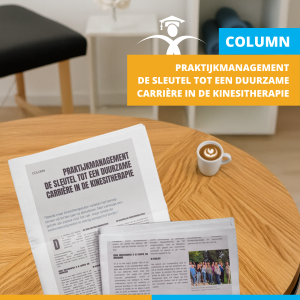SmartEducation Podcast with Rich Willy
Rich Willy’s 5 remarkable statements to never forget!
If you attended our lecture on “Restoring load capacity in the injured runner”, or if you’re a big fan of our SmartEducation Podcast, Dr. Richard Willy probably is no stranger to you. He’s an Assistant Professor in the School of Physical Therapy at the University of Montana, but mostly a big inspiration for many who treated runners. That’s why we were more than happy to invite him to come to Belgium for the first time ever and teach for SmartEducation!
As he was teaching his two-day course, we couldn’t help but notice the great “take home messages” he incorporated. Of course, that can’t go by without a special podcast episode. We had a nice chat about running, running analysis, running injuries and running shoes. His five most remarkable statements? We’ve listed them in this blogpost for you.
1. “Patients (or in this case ‘runners’) education is a must!”
Runners often have their own beliefs that things such as stretching or improper shoe prescription might be the main reason of an injury. But in fact, literature teaches us that almost all running injuries can typically be traced back to some sort of mistake that was made during the running or training practices. Often, runners don’t have a good grasp on how a little change might affect their risk for different injuries.
And that’s exactly why Rich is convinced that spending some time with runners, helping them to understand that, is critical. Otherwise, it is more than likely that they make the same mistake again.
As a beautiful example, he tells us about his own patient leaflets he uses in his clinic as some sort of education. That way, he can offer his patients a simple page they can take home with them when they’re overwhelmed with information… And oh, fun fact: a Dutch version of this very leaflet is coming soon!
2. “Although they run the same distance, an average marathon finisher has his foot on the ground 4 times as long as an elite runner.”
Astounding difference, right? In other words: an elite runner will have his foot on the ground for only 25 percent of the time any average marathon finisher has. We’re sure we don’t have to mention the vastly different training loads they’re experiencing!
Does that mean we should tell a male patient who won’t run a marathon in less than 4 hours that it’s too much for his body? Nope, running is healthy, decreases the risk on cardiovascular disease and even improves your joint health. An elite runner will probably run the race faster than the average runner, but that doesn’t mean they shouldn’t be doing these types of races. Training is key!
3. “Biomechanics matter, but not so much.”
When Rich Willy received is his PhD, he was convinced that biomechanics was the main reason for running related injuries. He’s changed his mind about that now though: while it may still be important, it’s not the main reason! It is typically a running load error that causes a running related injury.
Then when do biomechanics matter? It might just be how a runner is moving and is putting in additional stress on one area of their body. When they make a training load error, the injury will manifest themselves in the knee, the achilles tendon, or in any other weak spot.
4. “The way someone hops, tells us where their injury might be.”
There’s an important difference between a provocative test and a diagnostic test. An easy example of a provocative is the single leg hop test, where you can land on the ball of the foot or on the heel.
When you hop, you typically get most of your hopping power from your plantar flexors. That tenses our achilles tendon quite a bit, which could be really helpful if you try to understand that injury. The other way is to hop and come down and land on your heel. When doing that the load is focused through the boney structures (in this case your calcaneus), transfers up through your leg, your tibia, perhaps your fibula. So, landing on your heel very hard can perhaps elicit a bone type pain if that person has a bone stress injury.
A runner who has a plantar flexor type injury will hop, but might substitute more his knee extensors. They might be able to hop pain free, until you cue them and tell them to just use their ankle. That will reproduce their achilles tendon pain or their posterior tib pain.
The way someone hops can tell us where their injury might be: it’s a provocative test. It won’t diagnose someone, but it’s a great way to start.
5. “When it comes to preventing injuries, shoes are overthought.”
“We’ve seen lots of different types of shoes over the years, and it doesn’t seem to matter in what type of shoes someone runs, they’re still getting injured. The best advice I can give you, is to just pick a shoe that fits and feels comfortable for you.”, Rich tells us. “Of course, if you’re someone who has had achilles tendinopathy or plantar flexor issues in the past, a minimal shoe might not be the best shoe for you. If you’ve had knee pains in the past, the maximalist shoe might not be your best option either.”
As Rich is currently training for the London marathon, we couldn’t help but asking: what running shoes will he wear himself?
 “It’s been a decade since I ran my last marathon, so I’ll probably be around 4-5 percent slower now. That’s why I plan on wearing the Nike Vaporfly’s, to make up that difference. And I have absolutely no guilt about it. My goal? I would like to be around three hours. At the age of 46, that would be pretty great.”
“It’s been a decade since I ran my last marathon, so I’ll probably be around 4-5 percent slower now. That’s why I plan on wearing the Nike Vaporfly’s, to make up that difference. And I have absolutely no guilt about it. My goal? I would like to be around three hours. At the age of 46, that would be pretty great.”
Curious for more? Listen to our podcast with Rich Willy. Totally worth those 20 minutes of your time!












